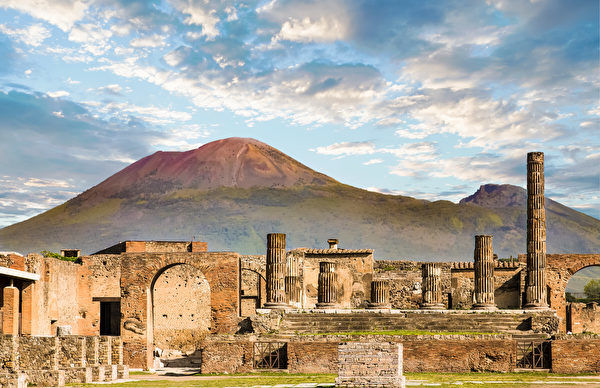On Thursday, June 5, authorities reported that a minor earthquake occurred in southern Italy, causing a portion of the wall and some arches of the ancient city ruins of Pompeii to collapse.
The 3.2-magnitude earthquake that occurred on Thursday morning is the latest in a series of earthquakes, with the epicenter located near the Campi Flegrei super volcano near Naples.
The affected area of Pompeii was previously damaged in a major earthquake in southern Italy in 1980, but has since been reinforced and restored.
There were no frescoes or movable artifacts damaged within the affected buildings, and no injuries were reported.
Gabriel Zuchtriegel, the director of the archaeological site, stated that inspections are currently underway to ensure that other areas have not been affected.
Pompeii was destroyed by the eruption of Mount Vesuvius in 79 AD. The prosperous town, which once had a population of 10,000 to 20,000 residents, remains preserved under thick layers of volcanic ash.
Established around 600 BC, Pompeii was originally a small fishing village at the foot of Mount Vesuvius. It became the second largest city in ancient Rome after officially becoming part of the Roman Empire in 89 BC, undergoing rapid development.
The favorable climate and abundant natural resources of the region attracted wealthy individuals to Pompeii, where they built gardens, villas, and entertainment districts, turning Pompeii into a renowned center of pleasure and luxury.
In 79 AD, after several earthquakes, the eruption of Mount Vesuvius on the west coast of Italy completely destroyed the thriving settlements of Pompeii, Herculaneum, Torre Annunziata, and Stabiae in the Roman Empire. Mount Vesuvius is currently the only active volcano on the European continent and is considered one of the most dangerous volcanoes in the world.
During the eruption, the once prosperous and affluent cities of Pompeii and its surroundings were hit by high-temperature magma, volcanic debris flows, and a vast amount of volcanic ash, resulting in the burial and suffocation of tens of thousands of people and other life forms within the city and its neighboring areas, all within a mere 15 minutes.

